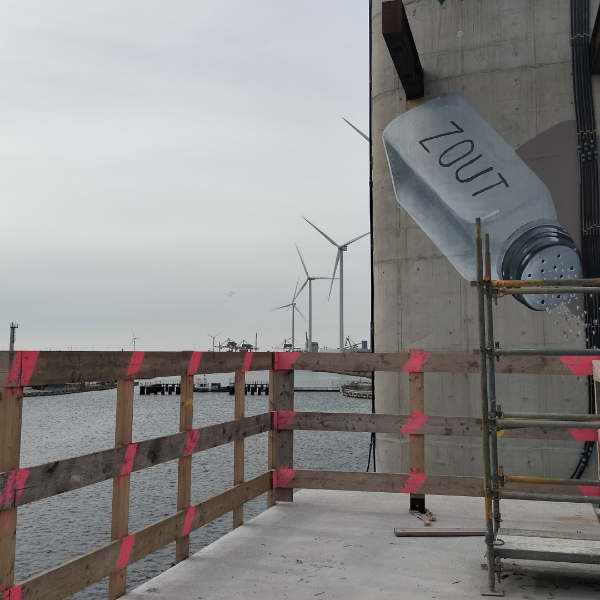Salt dam at IJmuiden sea lock: keeping fresh water and salt water apart

The new sea lock in IJmuiden is the largest lock in the world. Such a large lock can, of course, accommodate larger ships, but it also has a downside. The exchange of sea and canal water that occurs with each use means that salt water enters the North Sea Canal. The salt water flows in along the bottom while, at the same time, fresh water flows out to sea. Too much salt water in the canal negatively affects its ecology, as well as impacting on drinking water, nature, agriculture, and horticulture. To avoid these negative effects, measures are required to prevent the canal’s salt load from further increasing as a result of the lock’s use.
Selective extraction
In the future, the salt water will be sluiced back to sea through ‘selective extraction’. This will be done by means of a salt dam in the Binnenspui Canal north of the locks. Part of the canal will first be deepened to a depth of NAP -23 m. Because salt water is heavier than fresh water, the salt water will flow to this deepest point.
Pillars will be placed in the deepened section, between which walls will be installed up to NAP -16 m. This will create a ‘letter box’ at the bottom of the canal, where the layer of salt water will be located. When the pumping station or sluice is activated, more salt water will be released at the same volumetric flow rate. The salt dam in the IJmuiden lock complex will therefore ensure that the salt load in the North Sea Canal does not increase further.
Witteveen+Bos was commissioned by Rijkswaterstaat to prepare the design-and-construct contract and is advising Rijkswaterstaat during its execution. As with the IJmuiden sea lock, for which we also supervised works execution, we are working in an integrated manner with the technical management team of Rijkswaterstaat.
Current state of affairs
In October 2022, following preparatory work, the contractor started construction of the salt dam. In March 2024, the 27-metre-high pillars were installed in the deepened canal. The pillars were hoisted into place by Europe’s second-largest crane vessel, the Gulliver. In the summer of 2024, large concrete walls will be mounted to the pillars, and abutments and a pocket door will be installed in the pillars’ upper part. The salt dam is expected to be operational by the end of 2024.

Fish passages
A total of four fish passages will be installed in the IJmuiden salt dam. These will allow fish to easily swim from the sea to the North Sea Canal via the Binnenspui Canal, and vice versa. Many fish require different habitats during their life cycle – the eel, for instance, reproduces in the sea but grows up in inland waters.
For species such as this, the North Sea Canal is an important link between the sea and inland waters. The envisioned fish passages are large enough for a bus to pass through, with vertical slots and eel brushes creating the right conditions for fish to swim through. Besides the fish passages in the salt dam and the possibility of passage through the locks, the IJmuiden lock complex is itself no insurmountable obstacle for fish migration.